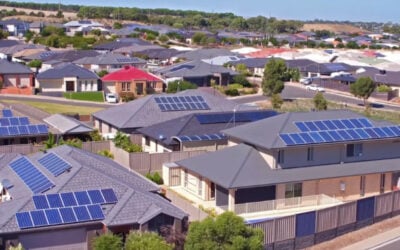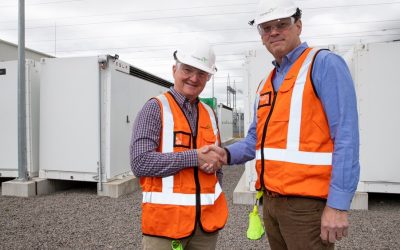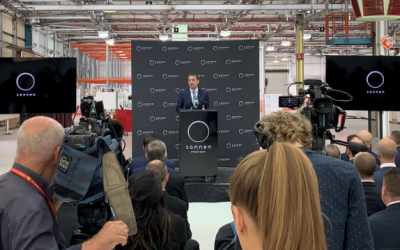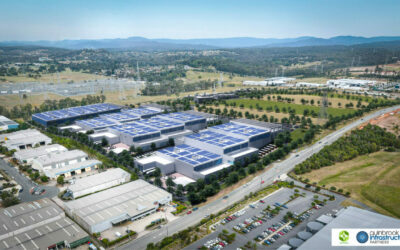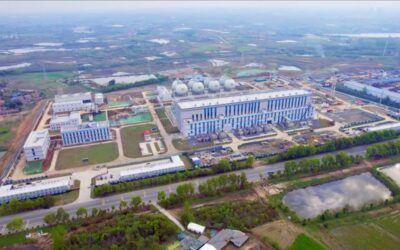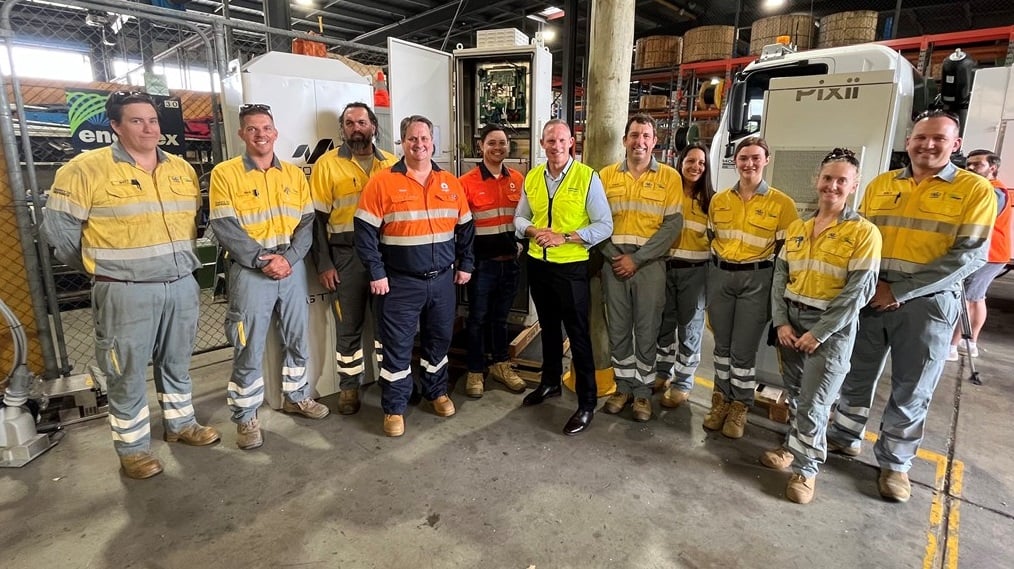
The government of Queensland, Australia, will invest in 48MW/96MWh of distributed battery storage and trial the use of flow batteries to integrate rooftop PV generation into local networks.
Premier Steven Miles announced last week that the state will invest AU$179 million (US$118 million) in the third and fourth phases of an ongoing programme to deploy mid-sized battery storage systems at community or neighbourhood level.
Enjoy 12 months of exclusive analysis
- Regular insight and analysis of the industry’s biggest developments
- In-depth interviews with the industry’s leading figures
- Annual digital subscription to the PV Tech Power journal
- Discounts on Solar Media’s portfolio of events, in-person and virtual
Or continue reading this article for free
The batteries are charged during times of abundant solar PV generation, or other off-peak periods when electricity is relatively cheap and low emissions. They then output to the grid when demand peaks, helping not only meet the shortfall of electricity generation capacity but also to keep the network stable.
Stage three will see a total of 12 battery energy storage system (BESS) units, each of 4MW output and 8MWh storage capacity, installed in various communities across the state.
In stage four, flow batteries made by local manufacturers will be installed and their suitability as an alternative or complement to lithium-ion (Li-ion) technology put to the test.
“We have the highest rate of rooftop solar anywhere in Australia so it’s only night that we equip our energy network to keep pace with the high rates of solar generation,” Miles said.
With Australia in turn having some of the highest rooftop solar PV adoption rates globally, that would make Queensland a “world leader” in solar too, as Miles also said.
“These batteries will take the heat out of the peak demand periods, and that puts downward pressure on electricity prices, benefiting households and businesses. Investing in batteries helps build the clean energy supply chain, creating business opportunities and jobs for Queenslanders,” state energy minister Mick de Brenni said.
While Australia is experiencing a boom in large-scale transmission-connected BESS projects, increasingly in the range of more than a hundred megawatts per asset, there is also thought to be a strong case for batteries at the local community level. It could pencil out cheaper than expecting individual households to buy a system each, for example, while also putting storage on the network at strategic points where it is most useful. The Australian Renewable Energy Agency (ARENA) is currently running a competitive solicitation with AU$210 million in funding available for community or neighbourhood batteries; the agency said in November that it had received more than a billion dollars-worth of applications.
‘Win-win-win scenario’
Queensland, historically Australia’s highest emitting among the states, has in place ambitious renewables and decarbonisation goals, including 70% renewables for electricity by 2032 and the cessation of coal-fired generation from state-owned power plants by 2035.
These were put in place through the Queensland Energy and Jobs Plan launched September 2022 by Miles’ predecessor as Queensland premier Annastacia Palaszczuk. The then-premier intended the plan to ensure economic opportunities for the state as well as its transition away from fossil fuels.
The AU$62 billion plan called for the deployment of 11.5GW of new rooftop solar and 6GW of embedded battery storage by the middle of the next decade.
Within that, Palaszczuk’s Labor Party created the AU$4.5 billion Queensland Renewable Energy and Hydrogen Jobs Fund. It is from there that the money for the local network battery systems announced last week will come from.
“This battery programme is fundamental to our success in achieving 70% renewable energy by 2030, and net zero emissions by 2050,” Miles said.
The initial stage of the programme saw five systems deployed, the second saw another 12 installed. The chief engineer for Energy Queensland, the state-owned company tasked with the rollout, said the next stage of the programme will “build off what we have leant from the past sites developed in stage one and two, to ensure that efficiencies and benefits are continually added into the programme,” Peter Price said.
“By basing the batteries in communities where there are large volumes of rooftop solar means renewable energy will be generated locally, stored locally, and then used locally, reducing the pressure on the network,” Price said.
“With these battery projects we’re aiming for a win-win-win scenario that achieves the energy trifecta for communities throughout the state – affordability, security and sustainability.”
It’s also interesting to note that Queensland’s Energy and Jobs Plan also pledged support to create a flow battery industry ecosystem in the state.
Queensland has abundant natural resources of vanadium, the main ingredient in vanadium flow battery electrolyte and the state is supporting the construction of a vanadium electrolyte factory from locally-headquartered Vecco Group.
However, it is also supporting two different flow battery technologies as well: ESI Asia-Pacific, a business making flow batteries using iron electrolyte technologies licensed from US manufacturer ESS Inc is building production facilities in the state with government support and zinc-bromine hybrid flow battery maker Redflow is headquartered in Queensland and recently got funding support for a project there along with ESI Asia-Pacific.
“Stage four of the plan will be particularly exciting as it will investigate the suitability of two batteries as an alternative to lithium batteries, with the added bonus of potentially kickstarting a local battery industry,” Energy Queensland’s Peter Price said.
Energy-Storage.news’ publisher Solar Media will host the 1st Energy Storage Summit Australia, on 21-22 May 2024 in Sydney, NSW. Featuring a packed programme of panels, presentations and fireside chats from industry leaders focusing on accelerating the market for energy storage across the country. For more information, go to the website.

